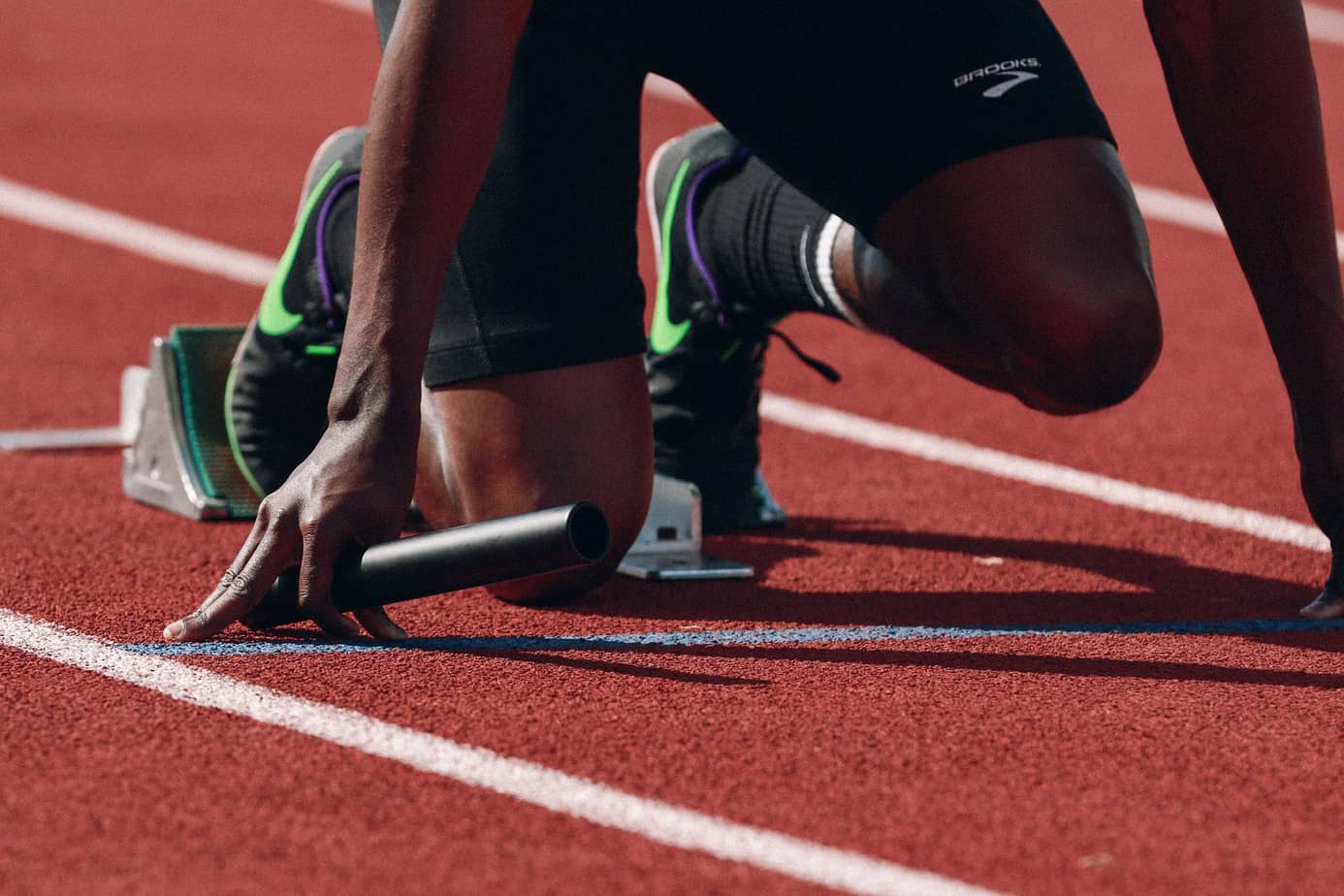A research review from the Performance Digest
Contents of Research Review
- Background & Objective
- What They Did
- What They Found
- Practical Takeaways
- Reviewer’s Comments
- About the Reviewer
- Comments

Background & Objective
When training and testing sprint ability, the focus is typically on linear (straight-line) speed. However, due to the open nature of team sports, sprinting is often completed in a curvilinear (nonstraight line) manner. As such, the aim of this study was to assess the characteristics of sprinting such as sprint angle and evaluate any positional differences in sprint angle and number of sprints in elite youth soccer players.
What They Did
Data was collected by Catapult GPS of thirteen elite youth male soccer players who compete in the U18 Premier League during six official
matches. Raw data was plotted and given coordinates when running velocity exceeded 24 km/h. This process involved:
- Determining a line between the first and last
point of the sprint (chord line). - A second line was plotted using the first
three data points to calculate the initial
trajectory. - Once both lines were plotted (like a V
shape), the angle between them was then
calculated to give the angle of the
curvilinear sprint. - The average number of sprints, sprint angle,
number of sprints between 0-5°, 5-10°, 10-
15°, and 15°+ were calculated for different positions.
What They Found
A number of key findings were reported in this
study:
- Substantial differences existed between the
various positions for sprint angle with
fullbacks performing smaller angled sprints
compared to all other positions. - Those playing as a centre-forward
performed larger angled sprints compared
to all other positions. Centre -forwards
performed a greater number of sprints
between 10-15° and 15°+ compared to all
other positions. - Fullbacks, wide-midfielders, and centre-forwards performed more sprints compared
to centre-backs and centre-midfielders. - There were no differences between sprint
distances for all positions.
Practical Takeaways
Irrespective of the playing position, it appears that the average sprint angle (curve of the sprint from initial trajectory to endpoint) for soccer players during a match is around 5°. One of the main differences between curvilinear running/sprinting compared to linear sprinting is that the body leans inwards (as opposed to remaining more upright). Thus, players are influenced by centrifugal force and consequently need to produce a mediolateral ground-reaction force in order to counteract the centrifugal force and stay balanced whilst running. As running velocity increases, having the strength and technique to overcome these forces may be an important determinant in
curvilinear sprint performance.
The vast majority of sprint training and testing in soccer is linear, therefore, testing curvilinear sprinting alongside traditional linear sprints may help inform practitioners about players who need to further develop this skill. While the average sprint angle is around 5°, curvilinear sprints may be required to be performed up to a 30° angle. This has important implications for training, rehabilitation, or designing “worst-case scenario” drills. For example, an athlete returning from a hamstring injury may start
to introduce small angle (5-10°) accelerations alongside linear speed progressions. As the athlete progresses to maximal velocity, introducing a “worst-case scenario” sprint may involve a more aggressive 30° curved sprint to prepare them for match play.
Reviewer’s Comments
While linear speed is of utmost importance, not just for performance but also for hamstring health, curvilinear sprinting cannot be
forgotten. Perhaps testing could be performed similarly to a “change of direction (COD) deficit” (see Performance Digest Issue #28 for more on this topic), where time or velocity can be measured for a 20 m linear sprint and 20 m curved sprint during 1-3 different angles. Ranking the athletes based on the deficit between the linear sprint and curved sprints, and then splitting them by the median score may help identify which athletes need a greater emphasis on curvilinear sprinting.
Furthermore, the skill of curvilinear running/sprinting should be trained alongside linear sprint or agility training. This may involve curved running around cones, as well as large agility games. These larger spaces may allow for higher-speed agility manoeuvres, which is likely to encourage a “swerve” or curved run to evade defenders.
Want to learn more?
Then check these out…
Read ‘Rugby Strength Coach: Agility Development Guide‘
Listen ‘Redefining “Agility” and Sport Movement‘
Read and watch ‘Turning the Weight Room Warrior into a Perceptive Monster: The Missing Link in Physical Preparation‘
The full study can be read here.


